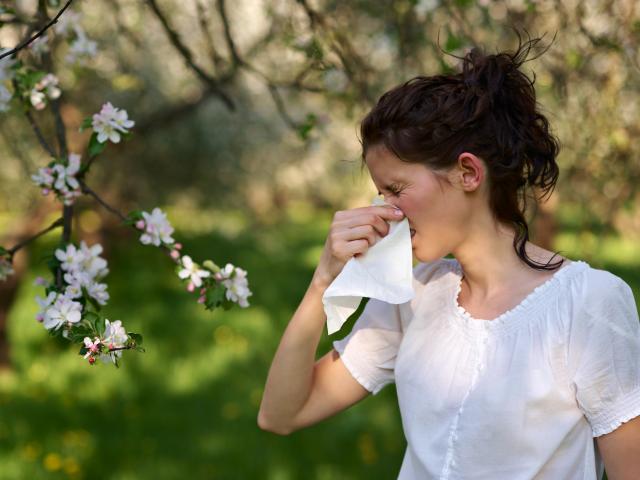
Spring arrives tomorrow and with it generous bundles of warmth and sunshine. But the new season won't be a welcome joy for everyone.
With spring come the annual pollen clouds, coating car windscreens and backyards with a fine film of yellow dust - and causing an onslaught of sneezes, itchy eyes, blocked noses and red eyes across the land.
An average of one in three Kiwis suffer some sort of allergy, but pollen is among the worst offenders.
WeatherWatch head analyst Philip Duncan said his forecasters had been receiving complaints from snuffling sufferers across the country over the past two weeks, suggesting the pollen had come early.
"It's been earlier and worse than usual, and that's not surprising, given we've had a record-breaking warm year."
Pollen was a common nuisance at this time of year because of wind, sun and warmth.
"Combine those three and pollen levels will likely be higher - especially if that wind is passing over land before it reaches you," Mr Duncan said.
Typical spring winds, like a nor'wester in Canterbury or a northerly in Wellington, could bring the bothersome yellow dust in high amounts.
"Pollen counts only climb from now through until about October then start to ease back a bit through November and December."
With the beginning of spring, the National Institute of Water and Atmosphere is picking particularly warm conditions later this week.
NIWA forecaster Ben Noll said subtropical winds flowing south from near New Caledonia at the end of this week will at times make it feel more like November or December.
Strong high pressure was forecast to pass over the top and then move northeast of New Zealand later this week and into the weekend, drawing warmth southward.
This pattern may repeat several times during the first half of September, and could mean a couple of rounds of record-breaking maximum and minimum temperatures.
"We are forecasting unseasonable warmth on Thursday and Friday across the east of both islands, where temperatures may rise to between 5C and 10C above the average maximum daily temperature. Some places may approach 25C."
The atypical warmth was expected to expand across the North Island by the weekend and may get more impressive from Sunday for couple of days when records could tumble.
A push of cooler air is possible between September 6 and 8 before the unusual warmth rebuilds, and there was potential for another round of record-breaking temperatures just after September 10.
The sun's altitude at solar noon was higher in the sky than it was a bit over two months ago at the Winter Solstice, allowing for more direct solar radiation.
This type of weather pattern was typically one that brought mostly dry conditions to the east of the South Island, a region that continued to suffer from below normal rainfall and soil moisture.
The warmer than usual weather may also contribute to some ski field snowmelt, especially at Mt Ruapehu; however, since many South Island fields had healthy snow bases, the effects there might not be quite so harsh.












